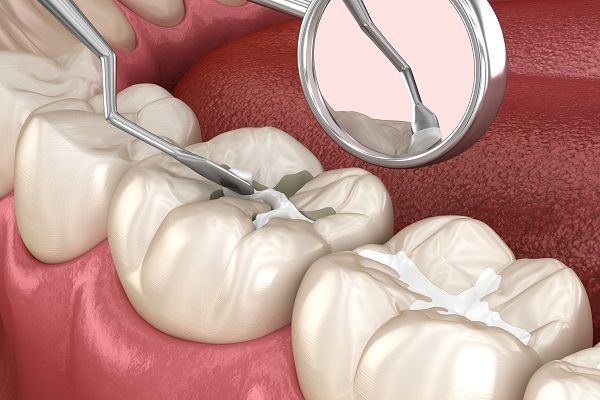Root canal treatments and tooth extractions are both dental procedures for teeth that have been severely damaged or decayed. Tooth decay and cavities are the most common causes of toothaches. If cavities are left untreated, they can cause more damage to the teeth, often leading to excruciating pain and discomfort in, and around, a tooth. This blog will give you a sense of how root canal treatments and tooth extractions work, their advantages, and what the recovery is like afterward. If your dentist has given you these treatment alternatives, it is critical that you understand what each one entails.
The Root Canal Procedure:
A root canal procedure treats infected or damaged nerves resulting from cavities or gradual tooth decay. When the cavity reaches a nerve, the nerve endings become infected and can cause agonizing pain and hypersensitivity. An endodontist, (a dentist specialist) will drill into the tooth, remove the infected pulp, clean out the root canal, and seal it with thermoplastic material. The tooth is then restored with a crown, giving it the appearance and functionality of a natural tooth. Modern technology and anesthesia make root canal treatment completely painless.
It is normal to feel a little discomfort after a root canal procedure. However, this can be alleviated with over-the-counter pain relievers.
What are the risks?
Root canal treatment, like any other medical procedure, has risks such as:
- Weakening of the tooth, making it more fragile and sensitive. It can also lead to tooth loss when exposed to pressure.
- The possibility of forming an abscess at the root of the tooth if the endodontist is unable to remove all the bacteria from the affected tooth.
The Tooth Extraction Procedure:
An extraction is a straightforward procedure. It removes the entire tooth, including the infected tissue and the nerve responsible for the pain. If a tooth is severely damaged, extraction is likely the best option and anesthesia will significantly reduce any discomfort. Because there is blood loss after the extraction, the dentist will provide you with gauze to bite down on for 30-45 minutes, or until the bleeding stops. It is normal to experience mild bleeding in the next 24 hours. However, if the bleeding gets uncontrollable, it is advisable to check with your dentist immediately.
Most people feel significantly better after 2-3 days, but the extraction location may take 2 weeks or longer to heal.
What are the risks?
The dangers of a tooth extraction outweigh the risks of root canal treatment. They are as follows:
- After tooth extraction, the space can act as a feeding ground for bacteria, causing infections that can swiftly spread to other teeth.
- A missing tooth can cause problems for the teeth around it, as they don't receive physical support. Overcrowding, overlapping, and misalignment can occur as a result of missing a tooth.
- Extraction of a tooth may also result in a great deal of bleeding.
- The possibility of tooth loss in the future also increases.
Cost Comparison:
Root canal treatments are considerably more expensive than a tooth extraction. The average cost of a root canal is between $600 and $1,400. A tooth extraction usually costs between $130 and $500. However, as shown above, there are pros and cons to each treatment. After extracting the tooth, it is preferable to get a dental implant to replace the missing tooth. This can prevent jawbone degradation and dental drift (i.e., movement). But, dental implants cost a significant amount of money.
After a root canal, it is advisable to place a crown over the affected tooth to protect it from any future problems. A crown is less expensive than dental implants. Root canal treatments keep your natural teeth intact, eliminating the need for tooth replacement and ultimately saving you money in the long run.
Conclusion:
Modern dentistry can easily replace a missing tooth, but it will never be the same as your natural teeth. If possible, keeping your natural teeth is always the best option. A root canal procedure is the preferred way to treat an infected tooth. But, if the tooth has suffered extreme damage, then tooth extraction is the only option. Root canal treatments in Montclair and Irvine have very high success rates. 90% to 95% of our patients who undergo root canal treatments can expect a functional tooth after the procedure.
If you have been experiencing toothaches with exacerbated pain, you need to talk to an endodontist. Here at 24/7 Local Dentist Group , our endodontic specialists will address the root of the problem and help you decide the best option. Call our office at (833) 220-2448 or schedule your evaluation online with our specialists.










